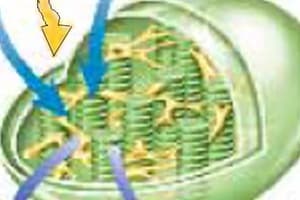Podcast
Questions and Answers
What is the primary function of microscopes in studying cells?
What is the primary function of microscopes in studying cells?
- To color parts of living cells for better visibility
- To measure the size of cells in centimeters
- To observe and magnify living cells (correct)
- To enlarge images of non-living structures
How are multicellular organisms defined?
How are multicellular organisms defined?
- Organisms that can be seen with the naked eye
- Organisms with only one cell
- Organisms with various shapes and sizes
- Organisms composed of more than one cell (correct)
What can be inferred about the importance of cell numbers in organisms?
What can be inferred about the importance of cell numbers in organisms?
- All organisms require the same number of cells to survive
- The number of cells affects the complexity of the organism
- The functioning of an organism is independent of its cell count (correct)
- Smaller organisms cannot function properly due to fewer cells
What does a hen's egg represent in biological terms?
What does a hen's egg represent in biological terms?
What do structures like bricks and cells have in common?
What do structures like bricks and cells have in common?
What allows Amoeba to capture food effectively?
What allows Amoeba to capture food effectively?
How does the shape of nerve cells support their function?
How does the shape of nerve cells support their function?
What distinguishes Amoeba from human white blood cells (WBCs)?
What distinguishes Amoeba from human white blood cells (WBCs)?
Why do cells in multicellular organisms have different shapes?
Why do cells in multicellular organisms have different shapes?
Which of the following correctly describes the nature of Amoeba?
Which of the following correctly describes the nature of Amoeba?
Flashcards are hidden until you start studying
Study Notes
The Cell - The Basic Unit of Life
- Living organisms are composed of cells, which are the basic structural units.
- Cells were first observed by Robert Hooke using improved microscopes.
- Today, advanced microscopes with high magnification allow us to study cell structure and functions in detail.
Similarities and Differences Between Cells and Bricks
- Cells in living organisms are analogous to bricks in a building, serving as fundamental building blocks.
- Despite being made of similar components, buildings can have distinct designs, shapes, and sizes.
- Similarly, living organisms vary significantly in appearance and structure but are all composed of cells.
- Unlike non-living bricks, cells are complex living structures carrying out essential life processes.
The Cell: A Complex and Dynamic Structure
- A hen's egg is a single cell, large enough to be visible without a microscope.
Diversity in Living Organisms - Cell Number, Shape, and Size
- Scientists use microscopes and stains to study living cells.
- Living organisms exhibit a wide range of shapes, sizes, and numbers of cells.
- Multicellular organisms are composed of multiple cells, while unicellular organisms consist of a single cell.
- Human bodies contain trillions of cells.
- The number of cells in an organism does not determine its complexity or functioning.
- A single-celled organism begins its life as a fertilized egg cell, which multiplies and differentiates during development.
- Unicellular organisms exhibit all essential life processes, such as capturing food, respiration, excretion, growth, and reproduction, within their single cell.
- Multicellular organisms perform these functions through specialized groups of cells forming tissues and organs.
Amoeba - A Single-celled Organism with Shape-shifting Abilities
- Amoeba is a single-celled organism that lacks a definite shape.
- Its shape is constantly changing due to the formation of pseudopodia (false feet), which aid in movement and capturing food.
- White blood cells (WBCs) in human blood are also single-celled structures that can change their shape.
- Amoeba is a complete organism capable of independent existence, while WBCs are part of a larger organism.
Shape of Cells: Relationship to Function
- Cell shape is related to its function.
- Spherical or elongated cells are common.
- Cells with a spindle shape are long and pointed at both ends.
- Branched cells, like nerve cells (neurons), receive and transmit messages throughout the body.
Size of Cells
- Cell size varies depending on its function.
- Nerve cells, for example, are elongated and branched, regardless of the organism's overall size.
Studying That Suits You
Use AI to generate personalized quizzes and flashcards to suit your learning preferences.




